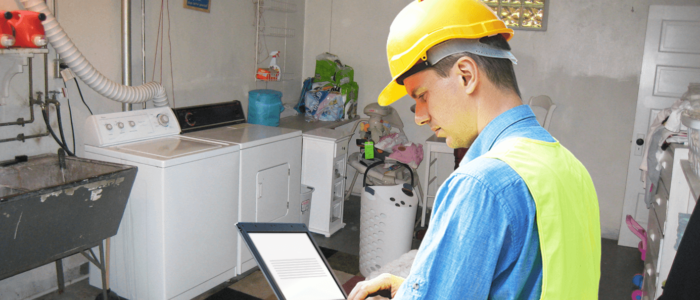Sewage Pump Specifications Include Location and Water Flow Rate
Article Chapters
Selecting a Sewage Pump Requires Property Data Analysis
Some domestic properties can be plagued with a foul smell that comes and goes but never completely disappears. In a number of cases, the solution is to install a sewage pump. Finding the cause can sometimes be a challenge if the property’s sanitation system appears to be correctly installed and there’s no apparent sign of damage or a fault. Specifying the correct sewage pump requires a precise analysis of many factors, including, physical location, existing ground conditions, wastewater flow rate, maintenance access needs and available power supply.
There are property types that will require a sewage pumping station if it contains a basement bathroom, kitchen, WC or laundry room, and the plumbing is located below the level of the main sewer pipeline connecting to the public sewer network. A condition known as ‘gravity drainage’ arises when waste water / sewage is unable to be discharged upwards against the natural downward flow of gravity, resulting in blocked pipes and a foul smell.
Sewage pumps needed for a variety of urban housing
The need for a sewage pump not only applies to those properties located at the bottom of a steep hill, a low lying rural area but also to a variety of urban housing subject to increasing extreme rainfall flooding.
A modern sewer is designed to take away raw sewage separately from rainwater. However, many areas of London, and even across some south east regions, are served by a combined sewer system removing both raw sewage and rainwater. Of more than 3,250 properties internally flooded by sewage and nearly 23,500 areas of private land or gardens flooded by sewage across the UK in 2018 /19 (Water UK), a significant number were based in and around London and other major urban areas.
Installing a sewage pump – specific ‘lifting’ requirements need to be calculated
Selecting a sewage pumping station is not so straightforward. Precise data needs to be collected from the property, it’s location, and environment so that the specific ‘lifting’ requirements can be calculated to enable the correct sewage pump to be installed.
Key factors in selecting a sewage pump include:
- Type of waste the pump required to remove is either clear effluent or raw / solid sewage.
- Basement square footage.
- Maximum height for which the pump will be required to lift waste.
- Required velocity of gallons per minute (GPM) to maintain pipe flow, free of waste. (Average flow rate for 3/4 bedroom property is around 10-12 GPM).
- Electrical supply voltage required for pump.
Sewage pump – further significant benefits
Clearly, the installation of a correctly specified sewage pump is essential for properties with ongoing problems caused by their location, i.e. frequent and extreme flood damage, and sewage backing up and unable to be efficiently discharged.
However, there are also further significant benefits such as, helping to prevent interior / structural damage from persisting dampness, and mould caused by stagnant water build up. Even the risk of fire can be minimised as moisture and dampness can result in electrical short circuits in basement appliances, such as washing machines, fridge freezers and electric heaters.
The pump housing containing the motor and impeller (which forces the waste through to be discharged) is produced from cast iron and is built for long term use. This means that the working life of a high quality sewage pump should be around 7-10 years. A residential sewage pump can be expected to last 5 to 7 years, extending to 15 years for a commercial sewage pump. Installing the correct size pump plus regular routine service maintenance will help to ensure maximum, reliable working efficiency.

